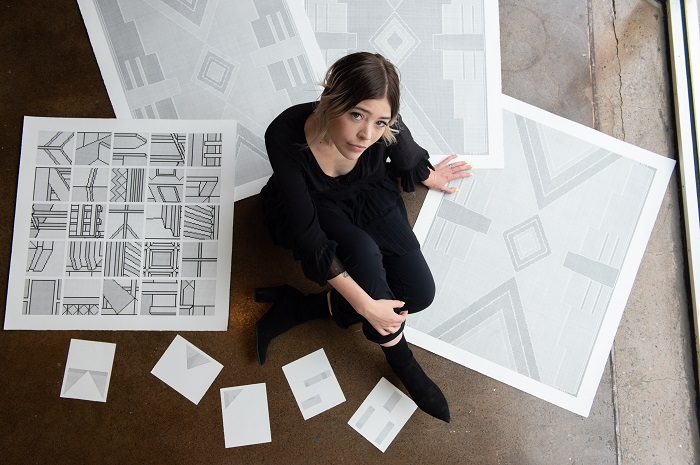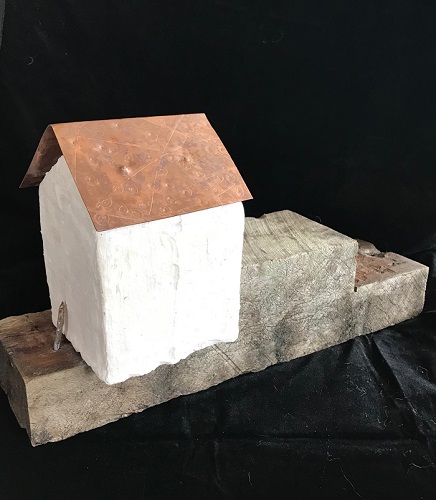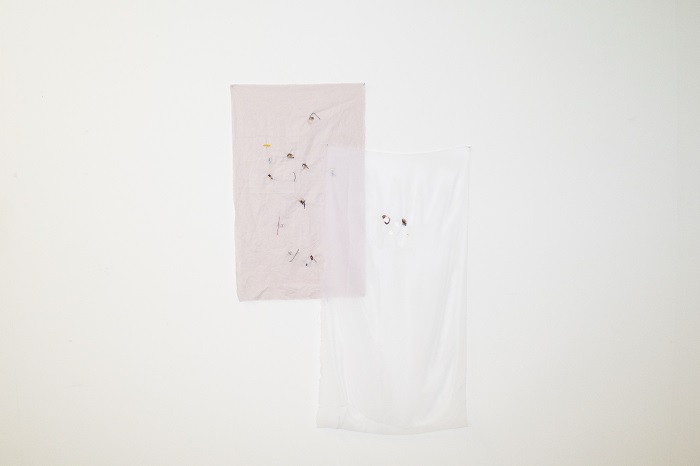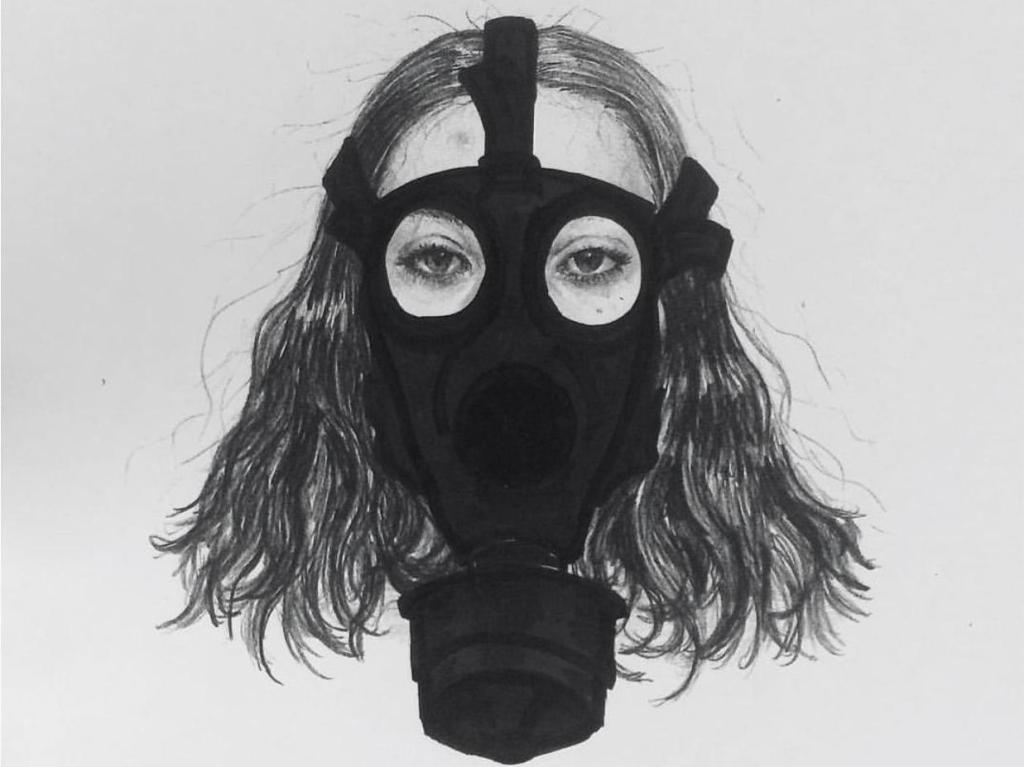Zee Mazloum Self Portrait 2018. Marker on scanned print. 42 x 30 cm. Courtesy of the artist.
She 2019 is an exhibition solely dedicated to emerging female artists, timed to coincide with International Women’s Day. Held at Walker Street Gallery for the past 17 years, in the last three years it has refined its focus to graduate artists, this year from Chisholm TAFE, Monash University, RMIT and VCA. Here you can catch women on the cusp of their careers, finding the forms and themes that declare their start in the world of art.
Although they may be recent graduates with many years in their careers to come, the work of each of these artists has a confidence and completeness about them that feels like they have already found their visual ‘voice’. Such is the original style of RMIT graduate Madeleine Joy Dawes, for instance, that her hand-drawn symbols placed on a ruled grid, like graph paper, could sustain a long career, operating on that frontier where digital forms are still subject to the human touch. Dawes says she speaks ‘the language of embroidery patterns’, which puts her somewhere in the same artistic frame as Elizabeth Gower, who opened the exhibition and has made her name by elevating the traditional forms of women’s domestic crafts into states of sublime art since the 1970s.

Madeleine Joy Dawes with her work Rebuild 2018. Pen ink on cotton rag. 150 x 150 cm. Supplied.
Similarly, Letisha Hirniak has created a genre of the suburban noir that turns the mundane into the subtly sinister under the shroud of night. Her ambition is brave, to work in the absence of light, but the effects of her six paintings here are so compelling and unsettling that the technical trials of working with darkness will create their own challenges to last a lifetime.
The next step for Karen Crawford’s sculptural assemblies from found materials will surely be to enter the Deakin University Contemporary Small Sculpture Award 2019, which closes on March 22. Her artistic ideal is to find a second ‘spiritual’ home for the discarded objects she finds, giving them a place and an identity they never had until they were taken up into her hands. Any of the six pieces in this exhibition could find a place in the finals for the Deakin award.

Karen Crawford Living On the Edge 2018. Found materials, plaster, copper. 23 x 39 x 13 cm. Courtesy of the artist.
Brooke Hyrons works lightly with fabric, making minimal interventions to the field of cotton to create ethereal states. These are poetic pieces, partly made with air it seems, whereas Zee Mazloum’s masks are visceral statements made in oil on tracing paper. They are in turns political, satirical and personal, but always bold and strong with telling touches of humour. It’s fearless work, but Mazloum confesses that she can only be unafraid ‘when I am hiding behind the masks’. They are all projections of a personality that has many silent identities.

Brooke Hyrons Necessary to mend 2018. Pen on cotton rag. 46 x 75 cm. Courtesy of the artist.
She 2019 is part of the nurturing tradition of Walker Street Gallery and Arts Centre. Here is a space that is close to its community and is a generous supporter of artists making their starts. Not all will end up like Elizabeth Gower, who has held more than 40 solo exhibitions in Australia and abroad since her first exhibition in 1976 and now has a doctorate and is a senior lecturer (and currently Honorary Senior Fellow) at the University of Melbourne/Victorian College of the Arts. But, like these five women in She 2019, they will be given every chance by this gallery to take their talents as far as they like.
Rating: 3 ½ stars ★★★☆
She 2019
Curator: David O’Halloran
7 March – 13 April, 2019
Walker Street Gallery and Arts Centre, Melbourne





